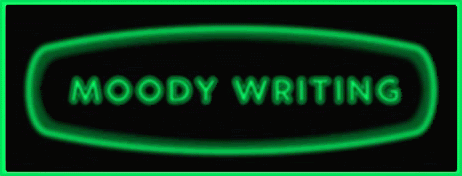Not only is it difficult to know how much information to give readers
so they know what’s going on, it’s also tricky knowing when to give it to them.
There are many ways to do it right, but there are two very specific ways to do it wrong.
One is signposting, where you say up front what’s about to happen, and then it happens. You end up stealing your own thunder.
The other is burying the lead, where you put off mentioning the elephant in the room, so that when you do eventually bring it up not only is everyone taken by surprise, but now it appears to be a teleporting elephant.
There are many ways to do it right, but there are two very specific ways to do it wrong.
One is signposting, where you say up front what’s about to happen, and then it happens. You end up stealing your own thunder.
The other is burying the lead, where you put off mentioning the elephant in the room, so that when you do eventually bring it up not only is everyone taken by surprise, but now it appears to be a teleporting elephant.
Signposting is usually due to a feeling that things won’t be clear unless
you point out what’s about to happen.
This can take the form of a preamble: The story I’m about to tell you changed my life forever...
Or it can be a case of telling readers what you plan to show them anyway: Mary was angry. She clenched her fists, stormed over to where Tina was having lunch, and spat in her face.
The root cause is insecurity.
Deep down you suspect if you don’t preface what you’re about to say maybe your intention won’t be clear.
And you could well be right. But explaining a joke doesn’t make it funnier. And neither will blurting out the punchline before the set-up.
It’s a case of having to trust in what you’ve written, and if it doesn’t work (which it won’t a lot of the time), taking your lumps and learning from it.
Burying the lead is the opposite problem. This is where you mention something important much later than you should have.
Often this is just an oversight. As the writer you know what’s going on, who and what is in a scene, but you can forget the reader isn’t aware of these things. A critique partner is the best cure for this.
But sometimes a writer can get so carried away describing the cave they don't mention the dragon that’s living there. And when they finally do, it seems odd no one noticed the big, scaly monster for so long.
It can be an easy thing to convince yourself you’re building up to a big reveal. Tension, suspense, anticipation—these are all solid narrative techniques. But it has to make sense. Choosing not to reveal the obvious for effect will seem contrived.
As long as you pay attention to the POV, you should be able to avoid this, or at least be able to recognise it when it’s pointed out. If the POV character is aware of something then the reader should be too.
Both signposting and burying the lead can be used to a writer’s advantage, if you use them to misdirect or to add voice.
For example, in the case of signposting:
His parents had called him Quiet Joe because he was such a noisy child. He was always shouting or screaming or laughing for no reason and eventually someone would say, “Quiet, Joe” and the name stuck.
Even though the first line provides an explanation, it doesn’t make very much sense until the rest of the story.
Or, for burying the lead, something like:
This can take the form of a preamble: The story I’m about to tell you changed my life forever...
Or it can be a case of telling readers what you plan to show them anyway: Mary was angry. She clenched her fists, stormed over to where Tina was having lunch, and spat in her face.
The root cause is insecurity.
Deep down you suspect if you don’t preface what you’re about to say maybe your intention won’t be clear.
And you could well be right. But explaining a joke doesn’t make it funnier. And neither will blurting out the punchline before the set-up.
It’s a case of having to trust in what you’ve written, and if it doesn’t work (which it won’t a lot of the time), taking your lumps and learning from it.
Burying the lead is the opposite problem. This is where you mention something important much later than you should have.
Often this is just an oversight. As the writer you know what’s going on, who and what is in a scene, but you can forget the reader isn’t aware of these things. A critique partner is the best cure for this.
But sometimes a writer can get so carried away describing the cave they don't mention the dragon that’s living there. And when they finally do, it seems odd no one noticed the big, scaly monster for so long.
It can be an easy thing to convince yourself you’re building up to a big reveal. Tension, suspense, anticipation—these are all solid narrative techniques. But it has to make sense. Choosing not to reveal the obvious for effect will seem contrived.
As long as you pay attention to the POV, you should be able to avoid this, or at least be able to recognise it when it’s pointed out. If the POV character is aware of something then the reader should be too.
Both signposting and burying the lead can be used to a writer’s advantage, if you use them to misdirect or to add voice.
For example, in the case of signposting:
His parents had called him Quiet Joe because he was such a noisy child. He was always shouting or screaming or laughing for no reason and eventually someone would say, “Quiet, Joe” and the name stuck.
Even though the first line provides an explanation, it doesn’t make very much sense until the rest of the story.
Or, for burying the lead, something like:
When he got home everything was as he’d left it. The dishes were unwashed in the kitchen, his clothes were on the bedroom floor, his wife’s body was in the lounge, the lawn still needed cutting. He couldn’t decide which to deal with first, so he made a list.
Revealing the wife’s body so far down sets the tone for the story. But it has to be clear that the approach is deliberate. Not that that guarantees it will work, but a reader might at least give you a few paragraphs to see if it goes anywhere interesting.
In both these examples, going against expectation is what makes it work. First, though, you need understand the form and know what the expectation is.
If you found this post useful please give it a retweet. Cheers.
*
Check out more posts on the craft of writing from numerous bloggers at The Funnily Enough.








































































































12 comments:
Point of view is a good checkpoint. If it's something we'd notice, then chances are the character would notice it as well.
Tweeted. This was a great post- thank you for sharing. I actually didn't realize there were names for doing either of these. LOL I did know about the first one signposting- I used to do it. But I didn't know about the second one.
~Summer
Another fabulous post, Mood. Love the 'burying the lead' technique. Very effective for dark humor! :)
@Alex - if you can lock into the POV and voice of a character everything should take care of itself.
@Summer - glad to help.
@EJ - Cheers.
"his wife’s body was in the lounge,"
LOL; yeah, I love this technique, and it works for me as a reader every time. I think the reason it works is b/c I'm character driven. This lineup allows me to stay with the character, but also adds that all important plot point. I will want to know so many things about the character as he deals with this situation, and why he feels the body being there is important; plus it gives me a direction for the story to develop around the character.
I dislike signposting as a reader. The one that irritates me most is something like the character thinking "What is the point of dragging me out here if he is just going to ignore me all night. He must have a plan. I wonder if he has to pretend I'm no here for my protection." Then sge asks the male character point blank "Why did you bring me out here." And of course he answers "I need you close for your protection but nobody must know I'm your body guard as well as your date."
The girl asks herself whats going on, suggests a resolution she would be happy with, asks the male the question, and he gives her the answer she expected. Soooo boring.
Both of these set ups need honest critique partners so the reader is not totally lead, or totally in the dark. I agree they can be used effectively, but it takes a lot of work for an author to pull it off.
.......dhole
Great post Mooderino. Signposting is something that we all should be aware of as we can steal our own thunder that way.
Thanks Mooderino for sharing such a useful post with us. There is just so much information on this blog I wanted to let you know that I’ve nominated you for the Very Inspiring Blogger Award which I recieved myself just this morning. If you would like to have a look I have mentioned you on my site.
I've never known the terms you used here before. Did you make those up? Anyway, signposting is great topic, and I'd guess more prevalent than burying the lead... I'd guess that my attempts at foreshadowing are really signposting.
@Donna - honest critique partners are the cure to pretty much everything.
@Rachna - cheers.
@jill - thanks very much.
@rusty - bury the lead is a journalism term, signposting is just what I've always called it, not sure where the name came from.
this is enlightening. i'm aware of some of the techniques mentioned but i have no idea what to call them
@miss u. - You already knew the important bit, but glad I could help with the ancillary stuff. I think I'd make a good writer's assistant. Do writer's have assistants?
good morning images gif
happy marriage anniversary di and jiju